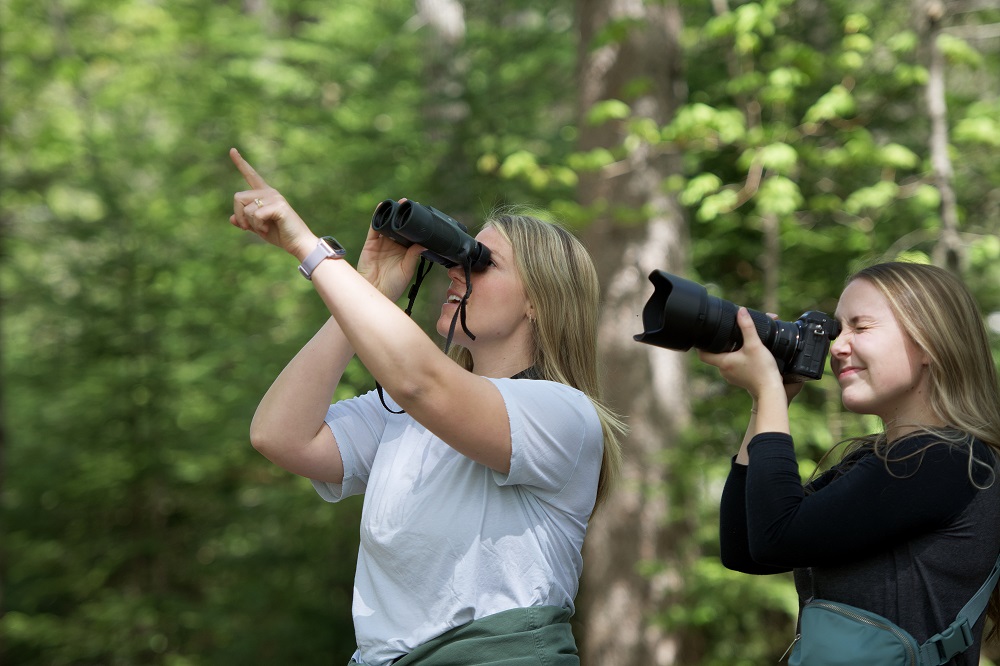Today’s post was written by Laura Penner, a Discovery leader at Rondeau Provincial Park.
Watching the world wake up and spring back to life after a long winter is something almost everyone looks forward to. While the winter has charm and stunning beauty, the thought of those long, warm days simply change the pace of outdoor activity.
We aren’t the only ones anticipating the change of seasons. In fact, nature has been investing large amounts of energy in order to take advantage of this relatively short burst of warmth and the seemingly limitless supply of food that comes with it. This is evident in the countless flocks of birds that migrate north each spring.
Have you ever stopped to wonder why some birds migrate at all?
It’s easy for us to understand why they would head south in the winter – it’s cold! If insects and fruit make up the bulk of your diet, it makes sense to go where those would be more abundant.

It’s the return trip that gets a bit harder for humans to understand. Why would birds leave “paradise?” Why would they risk everything to fly thousands of kilometres on the dangerous journey back north each spring?
This journey is necessary for their survival!
If they stayed south for the summer, the competition for resources would be fierce between the migrating birds and the birds native to the area.

Also, the spring migration north is timed perfectly with the opening of leaves on the trees, allowing migrating birds to take advantage of a huge increase in insect populations, hatching in time to eat those fresh new leaves.
The days become longer as the birds travel north and increased daylight hours provides more time for gathering insects.
Invisible highways in the sky
As the birds travel, they follow four main flyways — think of invisible highways in the sky. These flyways normally follow natural features like shorelines, mountain ranges, and river systems and help guide birds back to their nesting grounds.

In Ontario, we are lucky to have two of these major flyways branch off and cross over the province, bringing a huge variety of migrating birds through certain areas.
The value of the Great Lakes sand spits
The Great Lakes can be a challenge during the migration as many birds must wait for favourable weather in order to cross successfully. Lake Erie’s three sand spits (Point Pelee National Park, Rondeau Provincial Park, and Long Point Provincial Park) provide the perfect place for weary birds to touch down and refuel as they continue to move north.
Rondeau’s Festival of Flight
Looking for a new birding adventure? Join Rondeau Provincial Park for their annual Festival of Flight from May 4-19, 2024.
Twice a day during the festival there will be Guided Bird Hikes led by an experienced birder.

From warblers to waterfowl, they will introduce you to the wonders of Rondeau’s spring birding season.
Visitors can plan their trip ahead of time and obtain a daily vehicle permit in advance. Advance daily vehicle permits are available at 7:00 a.m., five days in advance of your arrival date. Reservations can be made online (here’s a walkthrough of how to book, including how to use your seasonal permit).
